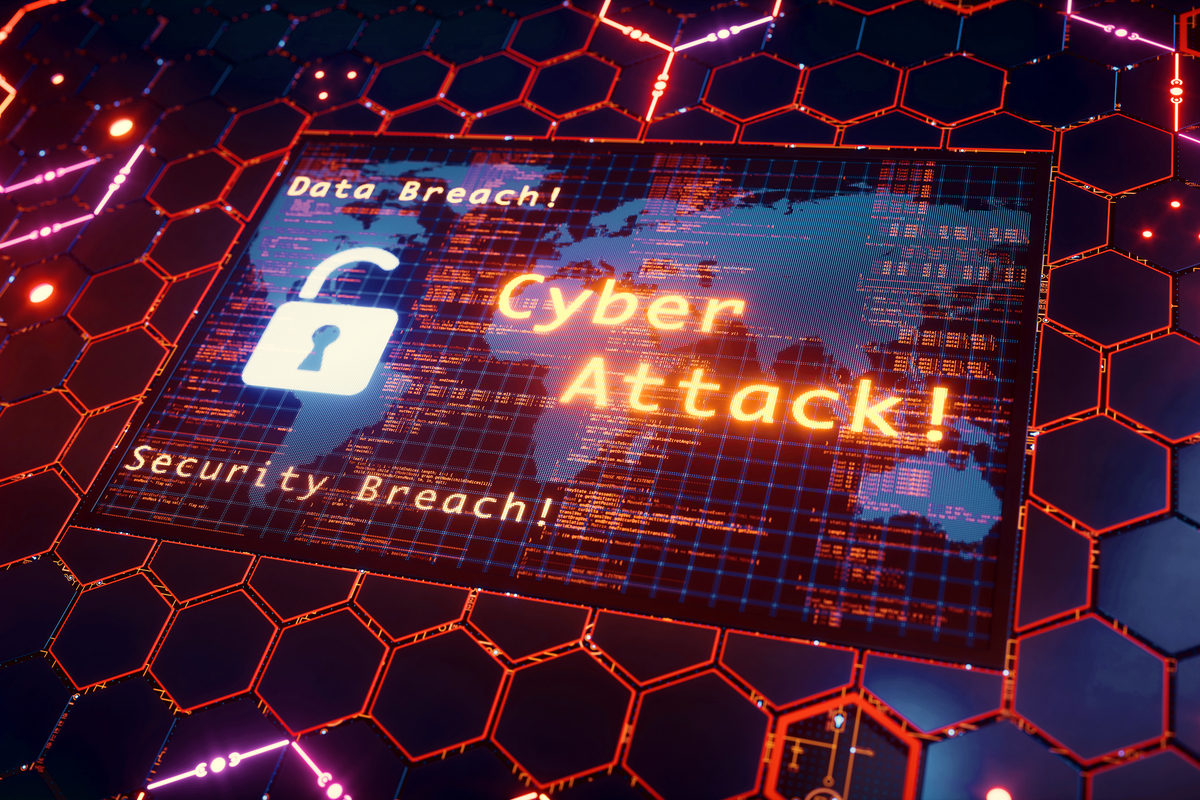 Almost every industry has certifications. Some carry more weight than others, but it’s clear there’s a trend of over-certification in cybersecurity. Most cybersecurity certifications aren’t hard to obtain and thus are not an illustration of someone’s expertise. The industry is creating many paper tigers — someone who claims to have knowledge but just passed a multiple-choice test to earn a certification.
Almost every industry has certifications. Some carry more weight than others, but it’s clear there’s a trend of over-certification in cybersecurity. Most cybersecurity certifications aren’t hard to obtain and thus are not an illustration of someone’s expertise. The industry is creating many paper tigers — someone who claims to have knowledge but just passed a multiple-choice test to earn a certification.
The Certification Structure Is Failing Us
The explosion of paper tigers in the industry is setting businesses up for cybersecurity failure. The bar for earning certifications has become dangerously low. Equally concerning is that there are no specific regulations on training or hours for cybersecurity professionals. In contrast, skilled trades require a certain amount of training hours, apprenticeships, and more. That’s a problem because those that are in place to protect one of your company’s most valuable assets — your data — aren’t ready to be in that position.
Certifications Do Not Equal Quality Talent
For many years, the industry has been buzzing about the lack of talent; there weren’t enough cybersecurity professionals to feed the demand. With this alarming message, certifications in the field became like a golden ticket to employment. The industry needed an influx of talent. Unfortunately, certifications do not equal quality talent. IT leaders, however, believe that certifications bring value. They do at times, but it’s risky to put so much emphasis on a few letters.
They are merely Band-Aids placed on the problem of putting effectual people into roles. Hiring demand was high, and certifications suddenly became what every hiring manager was seeking.
The proliferation of certifications is a cause-and-effect situation. Technology innovation and advancements required more professionals in the industry. Then there was a talent gap or a lack of people in the field. In turn, organizations promoted certifications that would give anyone a prosperous career path — except most certifications don’t test for knowledge, rubber-stamping individuals to increase the number of certified professionals. More education, however, isn’t the answer either.
College Degrees Don’t Solve the Talent Gap Either
The next logical answer to the talent gap is college degrees. Because surely, those graduating from university are prepared for the world. We know that’s not the case, as many graduates walk out into the real world and find themselves lost.
If every company required a four-year college education to get a job, there would be fewer candidates. But those candidates aren’t always going to be qualified. That’s because the university model has its own shortcomings, especially in the technology realm.
Think about how fast cybersecurity is changing. Every day, there are new attacks, each one more complex than before. It’s hard to capture all this movement in a textbook. How could a professor keep pace with this, especially one that’s not in the trenches? Frankly, there are a minimal number of capable professors with real-world experience. So, it’s all theory, and that’s what they teach. Theory very seldom equals reality.
Even applied sciences universities, which aim to be more practice-oriented, don’t adequately prepare students for a real job in cybersecurity. I was a cybersecurity professor at a university and attempted to bring practicality into the lessons. I framed my classes as real scenarios, leaving the books behind. I was trying to lead with practical knowledge, except the students complained and said it was too hard.
This experience proved to me that cybersecurity students wanted an academic degree, not a practical one. They either lacked passion or had no cognition of what cybersecurity work really is. Maybe Hollywood movies about hacking influenced their field of study. And that portrayal of the industry is anything but realistic.
What I learned from this was that the university system, like the certification one, is broken. Higher learning is not preparing students for the day to day of cybersecurity careers.
Hiring Practices Need to Evolve, Too
The other part of the cybersecurity certification and degree problem is hiring practices. Certifications are given far too much gravity over having useful hard and soft skills. Industry experts are aware of the over-certification, giving little importance to those pieces of paper. However, mainstream corporate hiring managers still give credence to the fact that someone passed a test, for which they could have easily memorized the answers.
Applicants then quickly update their resume and soon land a job in cybersecurity. Cybersecurity teams then become overrun by paper tigers. These individuals don’t have the skillset or experience to face the many challenges of the cybersecurity war. They are up against a more sophisticated army of hackers with a much higher acumen than those on the front lines protecting your organization.
The cycle continues. These paper tigers then hire more unqualified people. A paper tiger isn’t going to bring on someone that knows more than they do because they need to be the smartest person in the room. So, yes, the bar’s that low.
A disruption to the cybersecurity certification system needs to occur. Companies can push back on the certification ecosystem by requiring that certifications be practical.
The Shift to Practical Cybersecurity Certifications
So, how do we turn things around and be real about certifications while also improving them? The first step is to emphasize practical certifications.
Even though I believe there is an over-certification issue in the field, and most are worthless, I’m not counting out all certifications. The industry of training and companies hiring cybersecurity professionals needs to shift to practical certifications.
Practicality is not acing a multiple-choice exam. It’s functional and puts students in real-world scenarios to respond. As someone that holds over 25 certifications, I have a good idea of which ones are actually proof of expertise, and those are few.
Some certification bodies are evolving and doing it right. I’d be remiss not to call out some of the companies helping to fix the cybersecurity talent problem.
CompTIA
CompTIA offers cybersecurity certifications that combine hands-on experience and performance-based and multiple-choice questions. Their curriculum stays up to date on what’s happening in the field, focusing on techniques to combat new and emerging threats.
Their PenTest+ certification includes the elements discussed above and the management skills necessary to scope and manage weaknesses, not just exploit them.
EC-Council
The International Council of Electronic Commerce Consultants (EC-Council) is the world’s largest cybersecurity technical certification body. They have developed several well-known and respected certifications:
- Certified Ethical Hacker (CEH)
- Computer Hacking Forensic Investigator (CHFI)
- Certified Chief Information Security Officer (CCISO)
- License Penetration Testing – Master (LPT Master)
The National Security Agency (NSA) and the Committee on National Security Systems (CNSS) endorse their programs, and they have accreditation from the American National Standards Institute (ANSI).
The CEH program, which I think is one of the best, is an immersive class that includes 24 hacking challenges across four levels of complexity, covering 18 attack vectors. It’s a real hands-on practical learning experience. The practical part of the exam would be unpassable for paper tigers. You can’t memorize how to apply techniques to scenarios. It requires critical thinking and knowledge.
If you’re looking for a certification that translates into a cybersecurity job, the CEH should be at the top of the list.
Fixing the Hiring Practice Problem
The first thing any company should do regarding hiring is to let go of the fallacy that a certification is a mark of expertise. You need to have a broader view of what certification means. Simply put, was it a practical or a multiple-choice test?
Even if the person has a long list of certifications, this still isn’t a sign they have the skills you need. If you want to know whether the candidate has the knowledge you assume comes with these certifications, ask the right questions. If they can validate with their answers, you can feel more confident in the worth of those certifications.
The next part is to focus more on hard and soft skills. Hard skills align more with certifications and degrees. They are also testable. You can quickly discover if they have these. Soft skills are harder to gauge. You’ll learn that soft skills are often more valuable. They include being a good communicator and collaborator. Others are a willingness to change and evolve, staying curious and perceptive. In the end, they are people skills, and that may be the real skills gap in cybersecurity.
People Skills Are More Impressive than Certifications
Helping cybersecurity professionals enhance and grow their people skills could be the answer to winning the cyberwar. It’s not an easy proposition, but it’s possible to transform your employees (if they have the right mindset) and build their people skills. That’s the heart of my book, The Smartest Person in the Room. Read it today to learn more about cultivating your people.
 As much as every organization wants to believe they are cyber secure, the reality paints a different story. Cybersecurity methods continue to evolve with an emphasis on tactics and technology. This progression of companies and government agencies follows the cybersecurity status quo that it’s a hardware and software issue.
As much as every organization wants to believe they are cyber secure, the reality paints a different story. Cybersecurity methods continue to evolve with an emphasis on tactics and technology. This progression of companies and government agencies follows the cybersecurity status quo that it’s a hardware and software issue.

